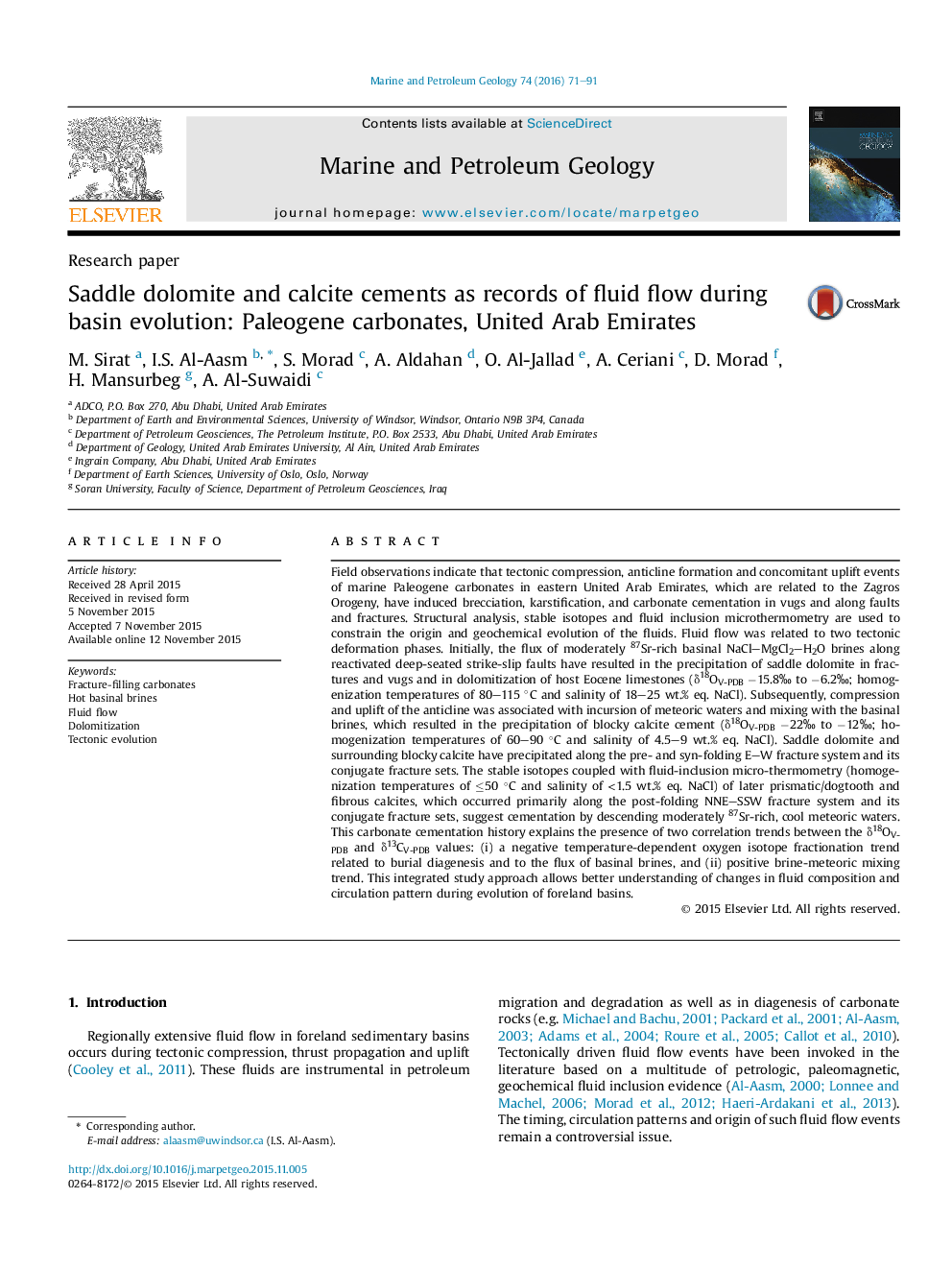| کد مقاله | کد نشریه | سال انتشار | مقاله انگلیسی | نسخه تمام متن |
|---|---|---|---|---|
| 4695409 | 1637153 | 2016 | 21 صفحه PDF | دانلود رایگان |
• The role of fractures and fluid flow.
• Geochemical and petrographic constraints on carbonate mineralization.
• Fluid flow modeling and thrusting events.
• Linkages between carbonate mineralization, fluid chemistry and tectonics.
Field observations indicate that tectonic compression, anticline formation and concomitant uplift events of marine Paleogene carbonates in eastern United Arab Emirates, which are related to the Zagros Orogeny, have induced brecciation, karstification, and carbonate cementation in vugs and along faults and fractures. Structural analysis, stable isotopes and fluid inclusion microthermometry are used to constrain the origin and geochemical evolution of the fluids. Fluid flow was related to two tectonic deformation phases. Initially, the flux of moderately 87Sr-rich basinal NaCl–MgCl2–H2O brines along reactivated deep-seated strike-slip faults have resulted in the precipitation of saddle dolomite in fractures and vugs and in dolomitization of host Eocene limestones (δ18OV-PDB −15.8‰ to −6.2‰; homogenization temperatures of 80–115 °C and salinity of 18–25 wt.% eq. NaCl). Subsequently, compression and uplift of the anticline was associated with incursion of meteoric waters and mixing with the basinal brines, which resulted in the precipitation of blocky calcite cement (δ18OV-PDB −22‰ to −12‰; homogenization temperatures of 60–90 °C and salinity of 4.5–9 wt.% eq. NaCl). Saddle dolomite and surrounding blocky calcite have precipitated along the pre- and syn-folding E–W fracture system and its conjugate fracture sets. The stable isotopes coupled with fluid-inclusion micro-thermometry (homogenization temperatures of ≤50 °C and salinity of <1.5 wt.% eq. NaCl) of later prismatic/dogtooth and fibrous calcites, which occurred primarily along the post-folding NNE–SSW fracture system and its conjugate fracture sets, suggest cementation by descending moderately 87Sr-rich, cool meteoric waters. This carbonate cementation history explains the presence of two correlation trends between the δ18OV-PDB and δ13CV-PDB values: (i) a negative temperature-dependent oxygen isotope fractionation trend related to burial diagenesis and to the flux of basinal brines, and (ii) positive brine-meteoric mixing trend. This integrated study approach allows better understanding of changes in fluid composition and circulation pattern during evolution of foreland basins.
Journal: Marine and Petroleum Geology - Volume 74, June 2016, Pages 71–91
